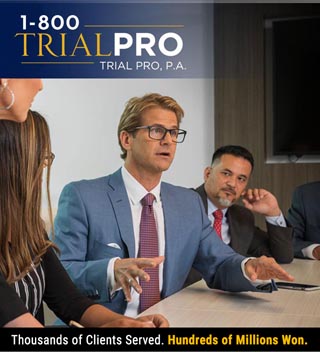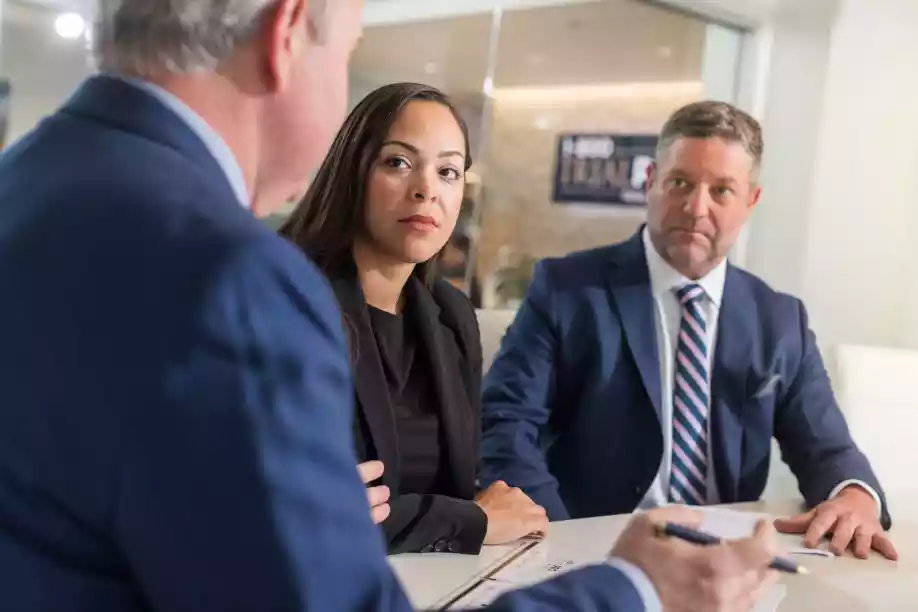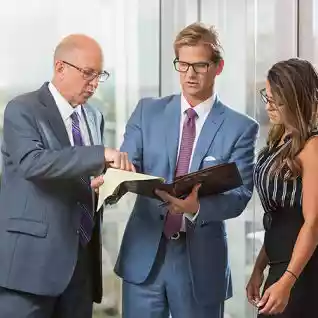Rear-end collisions are one of the most common types of auto accidents. Rear-ended crashes tend to be some of the most straight forward car accidents regarding determining liability. However, sometimes it is not always so easy to determine fault in a rear-end collision. It is important to understand which scenarios present issues for proving liability, so you are prepared if you are ever in this situation.
When a rear-end collision occurs the responsible party is usually apparent. In most cases, the driver of the vehicle in the back is the person responsible for the crash. Typically, the driver in the back could have and should have done something differently to stop sooner and prevent the collision. This is because a driver should never follow another vehicle so closely that, if the driver in front must stop abruptly, he or she is unable to stop in time before striking the other vehicle.
If a car hits you from behind, it will almost never be your fault, even if you were stopped. One basic driving rule is that you are supposed to leave enough room in front of your car to stop when the car in front of you stops suddenly. If the driver behind you could not top, he or she probably was not driving safely. However, the rear driver in a rear-end collision is not always at fault for the accident. Liability in a rear-end collision is not automatic and sometimes the lead driver or another vehicle is liable for the injured drivers' damages.
Liability is typically examined through damage to the vehicles involved (which has damages in the front and to the back) and the testimonies of the drivers as well as eyewitnesses. It's true that most of the time, the driver behind is solely responsible for the damages and injuries that occurred. Although unlikely, there are exceptions when it comes to liability in rear-end accidents. The following are examples of front driver negligence. The first of these is if the driver in front exhibited negligence of some kind that contributed to the accident. Distracted driving, which causes them to have to slam on their brakes to avoid a collision, thereby causing the car behind them to crash in their rear. For example, if a front driver's brake lights are out or if he or she engages in road rage or other reckless behavior, that driver can be held at least partially responsible. The vehicle in front has a flat tire or other malfunction, but the driver does not turn on hazard lights. The driver in front accelerated in reverse.
Frequent or unnecessary lane changes, cutting of other vehicles, or other dangerous aggressive driving behaviors that do not give a car adequate time to stop. Failure to properly merge at intersections. Trucks that do not have the necessary visibility markings on the back of their trailers, leading to serious rear-end truck accidents.
In addition to the two drivers involved, other parties may also be negligent and therefore, be liable for the damage and injuries in a rear-end collision. Some of these parties include as follows: Auto manufacturers who produce and sell defective car parts can cause rear-end accidents since tire blowouts or brake failures can cause a driver to lose control of the car and slam into the car in front of them. Government entities that fail to properly maintain or repair roadways. This is because hitting uneven pavement, potholes or substantial cracks can also cause a driver to lose control of the car. Accidents or broken down cars that are stopped in the middle of the road can cause a sudden traffic pileup during which rear-end collisions may occur. Children or other pedestrians that suddenly stop into the path of traffic can cause a driver to slam on the brakes, causing subsequent drivers to crash in the rear of the first car. Also other drivers may cause rear-end accidents if they suddenly cut off a car, run a red light or engage in other dangerous behavior that require a driver to suddenly brake, causing a chain reaction. Also a motorcycle might have cut you off. Multi-car collisions can also be an exception, especially if one car pushes a second so that it rear-ends a third vehicle. In this case, the first vehicle will be held liable for damages to all vehicles since what happened was out of the second driver's control.
There are a number of ways that you might go about proving liability. You might rely on eyewitness testimony who saw the crash. You can look at the accident report to see if it contains helpful evidence such as drawings of the events leading to the collision or names and contact information of witnesses. You can also look at skid marks and debris. In some cases, it may be necessary to use the services of an expert in accident reconstruction. They may be able to evaluate damage and other evidence to determine the speed at the time of the collision. Finally, if the cause of the crash might be a defective design or manufacturing defect, you may need to have your vehicle professionally inspected and conduct research to see whether other drivers have had similar problems.
Following an accident, fault may not be obvious and you may not know what to do or be aware of your rights to recovery. An experienced auto accident attorney from Trial Pro in Central Florida can evaluate your situation, conduct investigation and help you determine whether you have the right to financial recovery from the other driver or a third party. Remember even if you were partially at fault for your accident, you may still be able to recover under Florida Law.
If you or a loved one have been injured in a rear-end car accident or any other vehicle collision speak to an experienced Central Florida personal injury and car accident lawyer at Trial Pro. Call us at Trial Pro, P.A at-1-800-Trial Pro.











